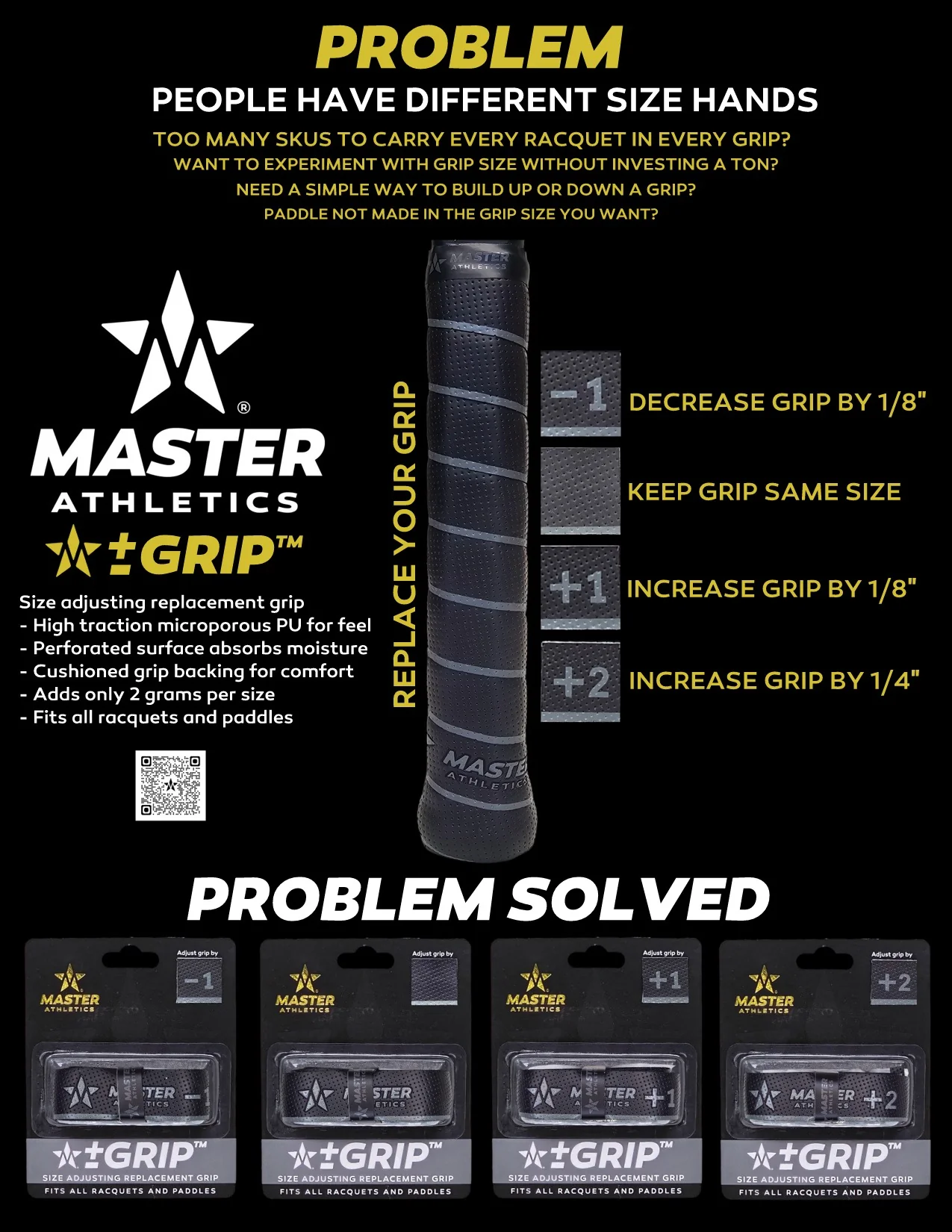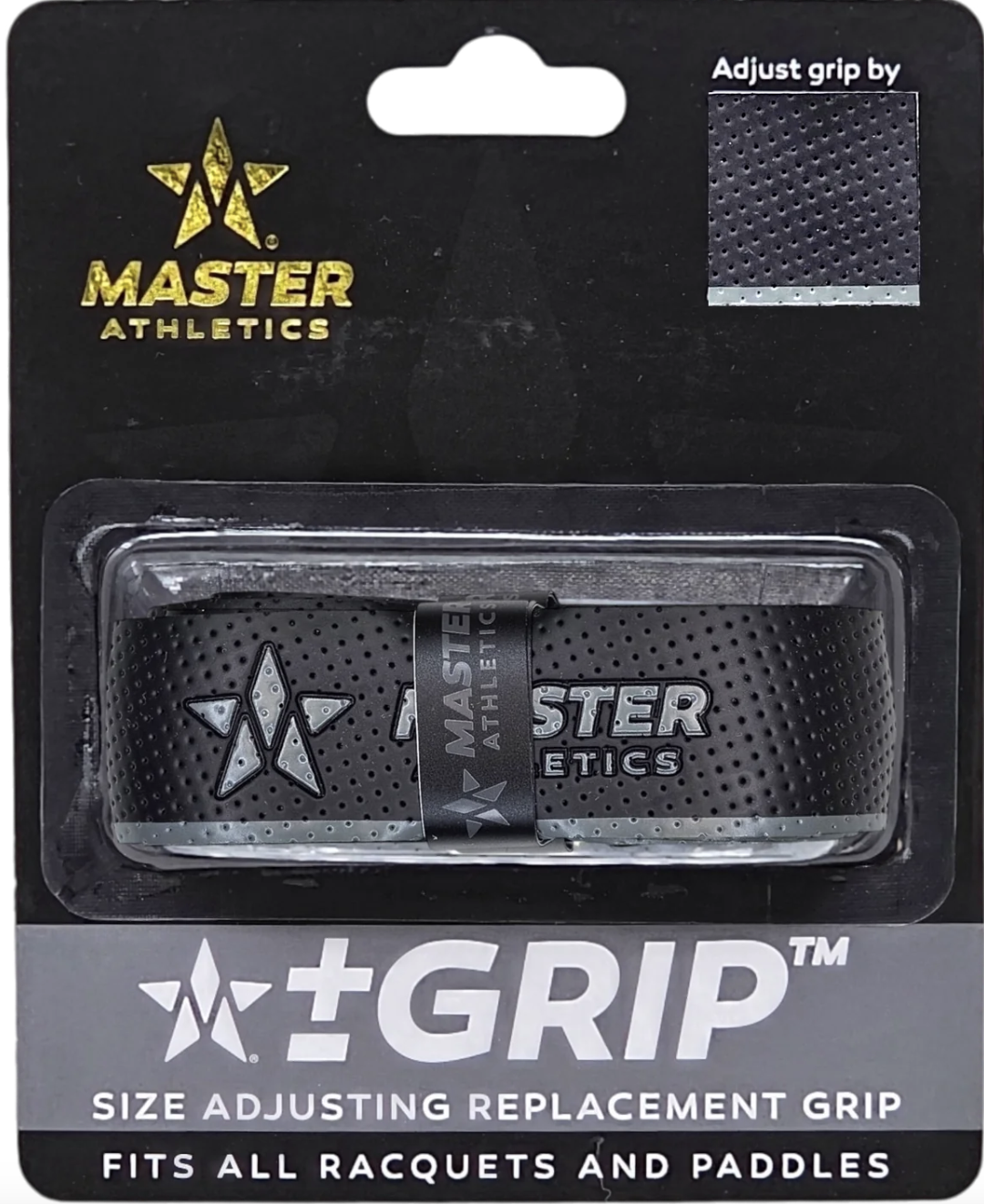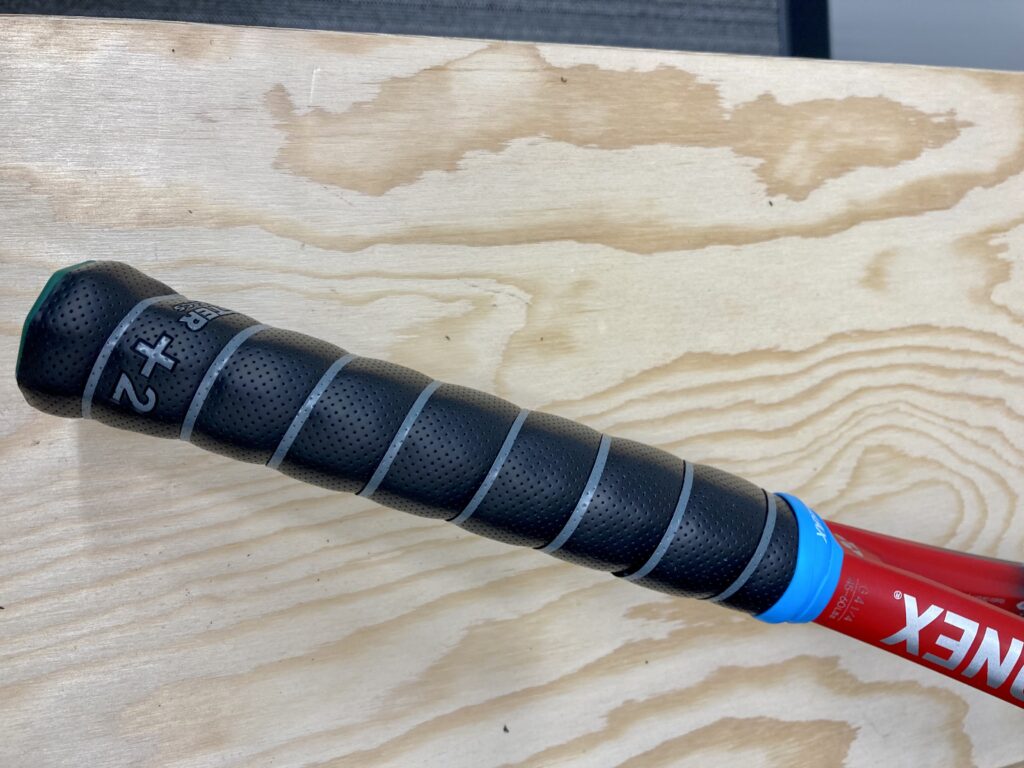Problem Solved – Grip Customization Simplified
What’s your “go-to” method for modifying grip size? If a player brings you a racquet with a 4 1/4″ grip but you properly measure and find their actual size is 4 1/2 how do you increase it? Conversely, if the grip was a 4 3/8 and the player measured 4 1/4 how would you decrease it? For the majority of my career I used three methods for increasing or decreasing grip size without investing in very expensive milling equipment for grip reduction.
- I would use R.A.B. heat shrink sleeves to increase grip size. This method was designed to increase the grip by one full size or 1/8″, adding roughly 12-14 grams of weight to the handle.
- Another method was to use Kara Kal grips, which Tim Henman introduced to me in 2000 at the very first pro tournament I worked at. Their Cushy grip increased the grip by approximately one full size, not perfect but certainly an option, making it nice and comfortable without adding all of the weight.
- For decreasing grip size I would use Prince ResiThin or Wilson Featherthin grips.
I’m fully aware that there are other options available but the ones above were my preference.
I’m happy to report to the IART community that we now have another option and our tests have shown that it’s very effective. Master Athletics has introduced a line of +/- replacement grips that we believe the industry has needed for a long time. The grips have small perforations and a slightly tacky feel, not too sticky but yet, tacky enough for a nice feel. The line includes a +1, +2, -1 and a standard size for normal applications.
We put the +2 to the test on a Yonex frame with a 4 1/4′ factory pallet and the results were quite impressive. We measured with a Taylor’s tape after the application was complete and the grip was exactly 4 1/2″, exactly what we looking for.
These replacement grips give technicians the perfect option for grip customization and make the job a breeze. Increasing by 1 full grip size is always an option with a heat shrink sleeve but you have to consider the weight increase. Plus, if you need to go up 2 full grip sizes, heat shrink sleeves will tend to round out the bevels and you’re adding even more weight. So, the +1 and +2 Master Athletic grips are the perfect solution. Reducing by one full grip size is just as easy with the -1 grip so all in all, adding these grips to your inventory is a no brainer.
For new business accounts use the following contact information:
800-783-1324
sales@master-athletics.com
For consumer purchases go to the Master Athletics website HERE




Comments (7)
Great product and post, Tim! Innovative, yet simple. I see that you can order them on their website. Could IART Premium Members get a discount or promo code? Just asking 🙂
As a business you can set up a wholesale account and that’s much better than the typical percentage type discount . You’d be buying them in quantity with a substantial savings. Ordering from their website you’d be paying retail prices. Give them a call or email them at the info below.
800-783-1324
sales@master-athletics.com
It’s remarkable that two racquets from the same brand, both with the same nominal handle size, can be quite different in actual size. The Babolat Pure Strike comes with the Syntec Feel (formerly Skin Feel) grip, which is 1.5 mm thick, but the Pure Aero comes with the Syntec Pro grip, which is 1.9 mm thick. Babolat has a Syntec Evo grip at 2.1 mm, and an Xcel Gel grip at 2.6 mm.
The Wilson Feather Thin grip is 1.4 mm thick, and the Kimony Expert Techni Leather grip is 0.8 mm thick. What is the generally accepted standard of difference in thickness to go from one size to the next full size, up or down?
In reality Mathew, this is not a subject that gets a lot of attention. A grip is a grip is a grip, right? Not necessarily and you’ve shown a good example of that in your reply. What Master Athletics did was drill this down to precise measurements and I presume this was done based on the supposed industry standard of 1/8 inch equals one full grip size. When I added the +2 grip to the Yonex frame it didn’t feel like the grip was that much bigger (thicker) however, once wrapped, I measured it and it raised the grip by exactly two full sizes. By developing both + and – sizes they’ve really helped us out a lot by taking the guess work out of the process.
If we pretend that the handle shape is circular instead of octagonal, we should be able to approximate the difference in thickness between handles one size apart. The circumference C of a circle is 2πr, r being the radius, so r = C/2π, and multiplying that by 25.4 mm/in will give us the result in mm.
4 3/4” or L6: 4.75 in/2π x 25.4 mm/in =19.2 mm
4 5/8” or L5: 4.625 in/2π x 25.4 mm/in =18.7 mm
4 1/2” or L4: 4.5 in/2π x 25.4 mm/in =18.2 mm
4 3/8” or L3: 4.375 in/2π x 25.4 mm/in =17.7 mm
4 1/4” or L2: 4.25 in/2π x 25.4 mm/in =17.2 mm
4 1/8” or L1: 4.125 in/2π x 25.4 mm/in =16.7 mm
4” or L0: 4 in/2π x 25.4 mm/in =16.2 mm
The difference between handles one size apart is 0.5 mm, which confirms what many say, that putting on an overgrip of average thickness takes a handle from one size to the next, so the difference in the thickness of two base grips should be approximately 0.5 mm to go up or down a size.
There are the Kimony Expert Techni Leather at 0.8 mm, the Wilson Feather Thin at 1.4 mm, the Babolat Syntec Team at 1.5 mm, the Babolat Syntec Pro at 1.9 mm, the Babolat Syntec Evo at 2.1 mm, and the Babolat Xcel Gel at 2.6 mm. From what I see many racquets seem to come with grips around 1.7 mm thick.
It’s good to be able to change handle size by changing the base grip, but because it’s thanks to the difference in grip thickness, and the grip will compress to some degree over time, I still think that customers need to be reminded how critical it is to be sure that they’re buying a racquet with the handle size appropriate for them instead of buying too big or too small and then trying to adjust. This is why I think it’s great that Head has removable pallets, making it pretty easy to move from one size to another without the process of changing pallets being very invasive or expensive.
Volkl has a similar system to Head’s and both are great ways to modify grip size. I agree that buying the right size to begin with is the best approach but players are often given bad advice or the subject is not even discussed. They’re also easily talked into buying a used DEMO at a “great price” that’s no where near the correct grip size and therefore, they end up on our doorstep and we’re then tasked with fixing the problem. Grip modification is covered in detail in the IART Advanced Racquet Stringing 201 course plus, we covered this at more than one of our training symposiums.
Head, Donnay, Fischer/Pacific, Fox, Mantis, Pro Kennex, Vantage, Völkl, and Züs racquets have or had pallet systems.
To your point Tim, I have a stringing customer who brought me one of his racquets to string over the weekend, and the three racquets of the same model he has have three different handle sizes ranging from 4 1/4” to 4 1/2”!